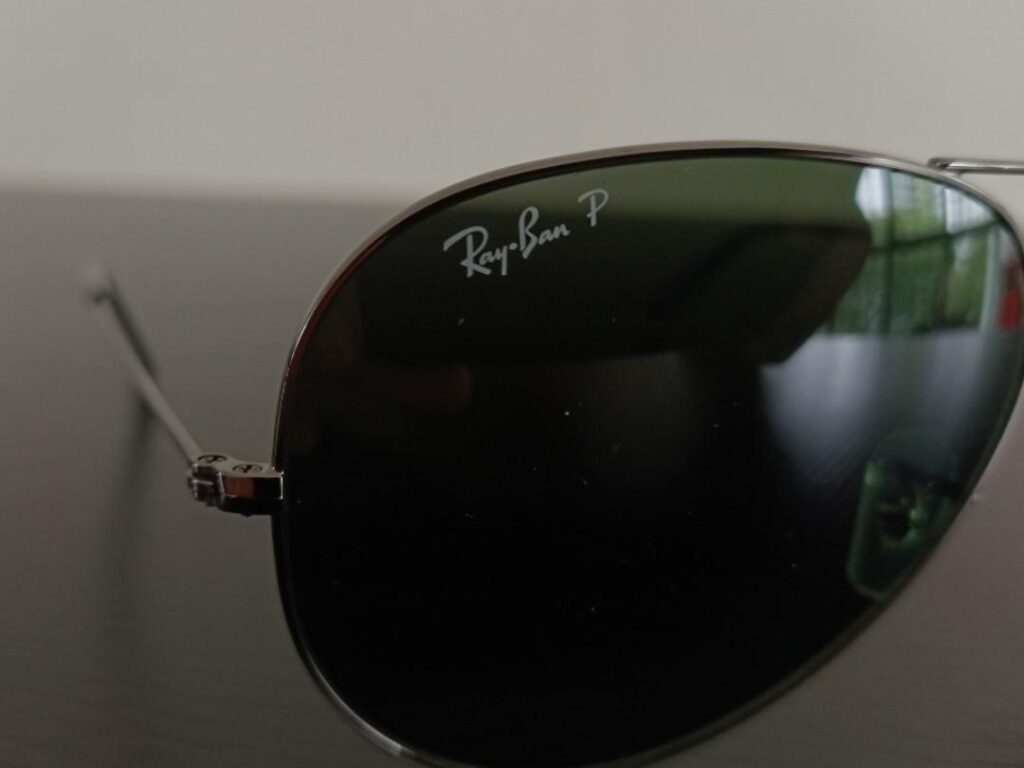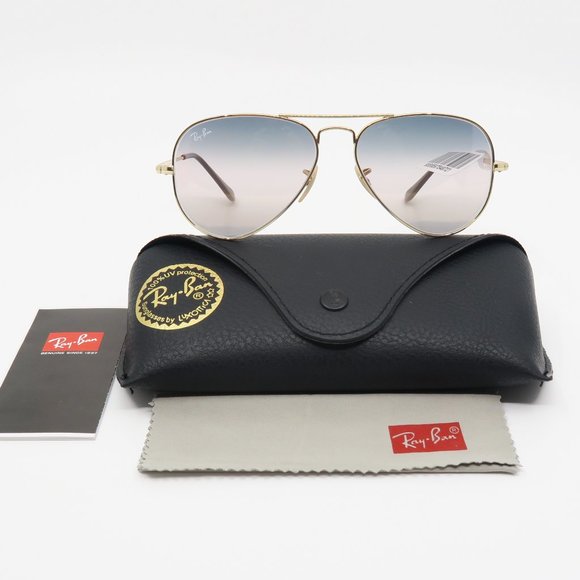Ray-Ban 3025 Review – A classic that is always ready for take-off.
(Read Time Approx: 4 mins 25 Seconds)
The Ray-Ban aviator 3025 is a classic. If you think sunglasses, I’m sure the classic aviator shape comes to your mind almost instantly. The teardrop shape is iconic. We have seen the shape since the 1930’s. This was when the birth of the real Aviator shape took off. Quite literally too. Ray-Ban invented the shape and technology to aid US Airforce pilots whilst flying. Since then, celebs and us “normal” folk have allowed the Ray-Ban aviator into our styles year in and year out.
The Lens is a classic aviator shape. One that dips down the face towards the top of the cheek. This allows for a lot of protection from glare bouncing up from below. However, this can be a shape that isn’t flattering for some. If you’re not sure if this style is for you, you can see our guide that answers, will aviators suit me?
So far we have spoken about a lot of metal and big lenses. We get that so far, that doesn’t sound like the most comfortable combo. Yet, like most Ray-Ban sunglasses, there are a few features that help keep these comfortable for a whole days wear. For example, the temple tips are plastic. This wraps around the metal frame offering a comfortable feel around the ear. Next up is the nose pads. These are adjustable so you can push them into place to sit perfectly on your nose. Plus, that thin frame sheds a lot of weight too.
The most distinct version of the 3025 is the gold metal frame with a G-15 lens. But, now we’re nearly 100 years into the style’s existence we have a whole host of choices. We have a huge mix and match of frame colours and lens colours and technology. Gradient lenses, mirror lenses, standard lenses, blue, green, rainbow, you name it, it probably exists.

The design hasn’t changed much over the years. There are many Ray-Ban takes on the original 3025. Some more modern versions have flatter templesand top bars. However, the classic has a thin metal frame, including the temples, all of which are cylindrical. This allows for a light fit. After all, there is a whole lot of lens in this design.
The Lens is a classic aviator shape. One that dips down the face towards the top of the cheek. This allows for a lot of protection from glare bouncing up from below. However, this can be a shape that isn’t flattering for some. If you’re not sure if this style is for you, you can see our guide that answers, will aviators suit me?
So far we have spoken about a lot of metal and big lenses. We get that so far, that doesn’t sound like the most comfortable combo. Yet, like most Ray-Ban sunglasses, there are a few features that help keep these comfortable for a whole days wear. For example, the temple tips are plastic. This wraps around the metal frame offering a comfortable feel around the ear. Next up is the nose pads. These are adjustable so you can push them into place to sit perfectly on your nose. Plus, that thin frame sheds a lot of weight too.
The most distinct version of the 3025 is the gold metal frame with a G-15 lens. But, now we’re nearly 100 years into the style’s existence we have a whole host of choices. We have a huge mix and match of frame colours and lens colours and technology. Gradient lenses, mirror lenses, standard lenses, blue, green, rainbow, you name it, it probably exists.
Many people ask if Ray-Ban aviators are polarized. The short answer, yes some are. The longer answer is as follows.
When choosing your 3025 sunglasses you may want them to be polarized. Thankfully, Ray-Ban offers this. The lenses will have a polarized film, which is invisible for us to notice, and this will filter out glare. The quickest way to notice if these are polarized is by looking at the Ray-Ban logo in the top left of the left lens (when looking at the sunglasses front on). Polarized lenses have a printed logo which says “Ray-Ban P”, the P standing for Polarized. However, not all lenses are polarized. This is just like not all lenses are gradient lenses or mirrored lenses.

Each Ray-Ban Aviator has a size. In fact, there are three to choose from, 55mm, 58mm and 62mm. 55mm are the smallest and are great for those with smaller heads. These aren’t small enough for children though. Then there is the 58mm which is an average size for sunglasses. These will fit most people quite nicely. Then finally, the 62mm which is a large size and will fit most larger heads with ease. So, there is a size for all!

Yes! In more than one way too. So, if they’re not sitting right on your nose, simply hold the frame in one hand and with finger and thumb push the nose-pad arms in the direction you need. These will move and stay where you need them to. You have to be a little brave at first to get them moving, but don’t be a brute and move them too heavy-handedly as they can still snap.
If they don’t fit around your ear properly or sit wonkily you can adjust the frame. We recommend popping into your closest opticians for this though. You can do it at home with a little force, and some people even say to use a hairdryer to warm up the frame. However, opticians usually do this for free and they’re trained to do it.
Again, Yes! If you really want to, it is possible. However, we would say to make sure the replacement lenses offer UV400 protection and are of a good standard. You don’t want to ruin your eye health for the sake of fashion.
With an optical screwdriver, you can slightly loosen the screws on the top side of the hinges. Don’t unscrew the whole way, just enough to have a little gap between the lens and the rim. You can then just push the lens out and put your new ones in. Then simply tighten the screws back up, which will bring the rim back to the lens. Don’t overtighten though as you can blunt the screw. Always read your warranty booklet before attempting any changes as this may void your warranty.
Copyright © 2024 Vision Opticians Ltd

Subscribe and unlock exclusive discounts on the latest full-priced Oakley eyewear!